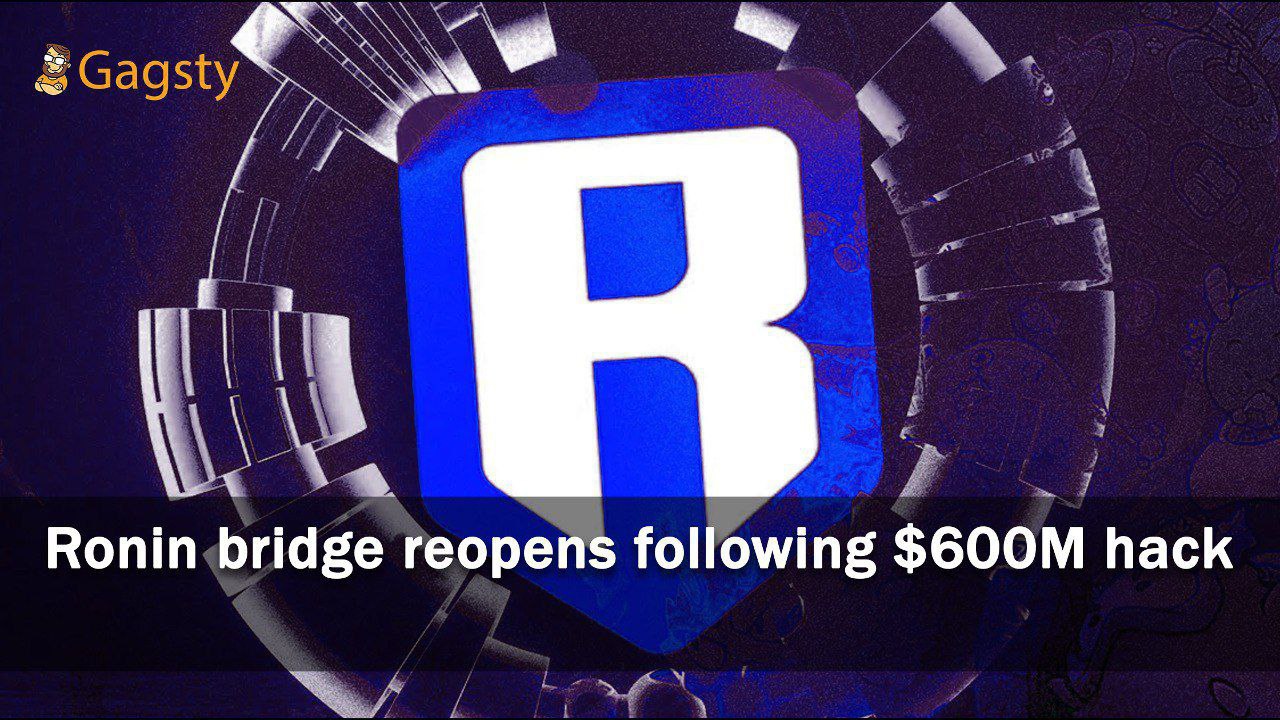
Sky Mavis, developers of the popular play-to-earn (P2E) NFT game Axie Infinity have announced that the Ronin bridge is back online three months after it was hacked for more than $600 million.
The Ronin bridge is an Ethereum sidechain built for Axie Infinity, and it enables users to transfer assets between the sidechain and the Ethereum mainnet. It is tied to Axie Infinity and is back up with a new design after Sky Mavis introduced a circuit breaker system and daily withdrawal limits.
On March 29, 173,600 Ether (ETH) and 25.5 million USD Coin (USDC) were hacked from the bridge after hackers managed to gain access to private validator keys.
According to the June 28 declaration from the Sky Mavis team, the Ronin bridge is back online after three audits (one internal, two external), a new design, and full compensation for users’ stolen assets. Contextually the hack was worth more than $620 million at the time.
“All wETH and USDC owned by Ronin Network users is now fully backed 1:1 by ETH and USDC on Ethereum, as promised. All users’ have been made whole.”
In total, Sky Mavis has now compensated 117,600 ETH and 25.5 million USDC by providing the ETH liquidity to back users’ wrapped ETH (wETH) on the Ronin network.
Around 46,000 of that ETH had already been compensated after Binance provided a bridge to its exchange in April so that users could swap out wETH for ETH. Liquidity was obtained from the Axie Infinity balance and founders’ funds to support the move. Binance also led a $150 million funding round to help Sky Mavis repay Axie Infinity users.
The remaining 56,000 of the total stolen ETH belongs to the Axie DAO Treasury and will continue to be uncollateralized as Sky Mavis “works with law enforcement to recover the funds.”
As part of the restored bridge design, Sky Mavis has updated the smart contract software to enable validators to set daily withdrawal limits, with the initial amount set at $50 million at this stage. The team also introduced a circuit breaker system that breaks down the monetary value of withdrawals into three tiers.
Tier 1 is for drawings less than $1 million and needs 70% of validators to sign off, and tier 2 is for amounts more than $1 million and requires 90% of validator signatures. Tier 3 is for drawings more than $10 million and requires a 90% validator sign-off, a small transaction fee, and a seven-day review procedure.
“The new bridge design includes a circuit-breaker system as a contingency plan which increases the security of the bridge by halting large suspicious withdrawals.”
Sky Mavis acknowledged in late April in a postmortem report that its lack of decentralization had made the Ronin bridge helpless to the hack. At the time it had just nine validator nodes, of which the employees had access to four of them.
After raising the number of nodes to 11, Sky Mavis drew purposes to raise the count to 21 within three months of the post-mortem, with the long-term goal of surpassing 100 total nodes.
However, the team did not deliver an update on how many validators nodes the Ronin network now has in the latest announcement.
Axie Infinity has seen its monthly NFT sales volume chamber in 2022, with data from CryptoSlam presenting that the game went from generating $126.4 million in January to just $2.8 million in June.
Leave a Reply